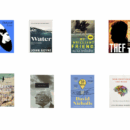Why the lazy may be your best innovators

Why is innovation so difficult? Is it because coming up with brilliant new ideas is so hard? Not really. Innovation is a team sport. Put some talented folks together under the right conditions, and the ideas will flow. The real problem with innovation comes well before the team gathers to generate ideas.
Lech Walesa once said: “I’m lazy. But it’s the lazy people who invented the wheel and the bicycle because they didn’t like walking or carrying things.”
Necessity is the mother of invention—that’s a long-forgotten adage. Lech Walesa equates necessity to laziness. It wasn’t idle curiosity that inspired the first human to strike flint against stone and make fire; it was the biting cold of a hostile environment. The wheel was invented because of the sheer arduousness of dragging heavy loads across uneven terrain.
Throughout human history, the most transformative innovations have been born out of a pressing need to solve problems and inconveniences. In the 15th century the world was hungry for knowledge, but texts had to be copied by hand, slowly and painfully. Johannes Gutenberg came up with the movable-type printing press, and suddenly books and texts could be printed quickly and much more cheaply. This sparked the spread of literacy and knowledge across Europe and the world.
Centuries later the internet came into being, decentralising communication and transforming forever how everyone informs, broadcasts, interacts, and disseminates. But the internet relied on personal computers, which were heavy and expensive. Enter the smartphone, which truly democratised communication by residing in the palm and the pocket of most humans on the planet.
The core of innovation is this: a tangible, unavoidable challenge that forces some of us to think differently. This echoes the phrase I often use on this page: the comfortable don’t innovate. Those who are unbothered or unflustered by the status quo will not be the ones to change anything. You have to be troubled to improve things.
In business, all of the breakthrough innovations of recent times have been born of inconveniences. Music and video streaming; electric vehicles; e-commerce; and now artificial intelligence; these have all emerged from their predecessors being too slow, too onerous, too restrictive, or too expensive.
And that’s where the lazy folks come in. I am one of them. Some of us exhibit an apparent lack of go-go activity, but this doesn’t equate to being slothful; it’s actually about being an efficiency seeker. A few people are just hell-bent on finding smarter, quicker, and easier ways to get things done. Things that are hard and slow and repetitive become the fuel for creating new ways. This “laziness” then, is actually an intolerance for all things cumbersome, an annoyance with unnecessary exertion.
So if you’re a business leader trying to drive fresh thinking: seek out the lazy ones! Or, to be clear, don’t focus on comfortable people doing comfortable things; look for the frictions in your business—and the people most bothered by them. Where are things really slow? Where are customers most frustrated? Which employees are just accepting of the situation—and which ones are most vexed by it? Those working hard and diligently within the status quo may be of great value today—but they’re unlikely to be the ones to change things.
Innovation begins where there are inefficiencies, pain points, and frustrations. The great opportunity for innovation sits where the current way of doing things is just sub-par. Embrace that discomfort. Then, avoid the people most invested in the current situation and most comfortable with carrying on in the same ways. Look instead for the ones who most want it changed. That’s a special category of lazy persons—the ones who are unwilling to accept things as they are because they won’t work that way.
Airbnb disrupted the travel and hospitality market because its founders noticed that they couldn’t book hotels in busy periods, and finding apartments was too expensive and cumbersome. They were uncomfortable enough to invent a solution, and now handle millions of listings worldwide. Uber’s founders were frustrated by the inefficiency of traditional taxis: long waits, inconsistent pricing, inconsiderate service. They created a platform that changed the game.
A warning, though: there also plenty of folks around who are just plain indolent! I’m not writing a manifesto for traditional laziness. The apathetic and the lethargic will not help you innovate; heck, they won’t even carry their own weight. What is needed is that interesting combination of a disdain for traditional activity, and a desire to change things up. If you can find those people, they’re your most likely innovators.
The laziness that fuels innovation is not an unwillingness to work; it’s a desire not to waste time and energy on things that could be done better. Some folks are driven to invent tools, processes, technologies and ways of working that streamline tasks and improve outcomes. This mindset is not idleness; in fact it requires more mental effort, creativity, and persistence than mere acquiescence does.
The take-home: to innovate, start where there’s most pain in the current system—pain is the fuel of innovation. Then, seek those people most bothered by that pain, and most equipped to generate a range of new solutions. Gather them together, let them do their thing, and start filtering.
(Sunday Nation, 13 October 2024)

Buy Sunny Bindra's new book
The X in CX
here »
Popular Posts
- My books of the yearDecember 14, 2025
- Confessions of an explaining personDecember 7, 2025
- Here’s why you should become foolishNovember 30, 2025
- How to listen, really listenNovember 16, 2025
- Is AI hiring your company into oblivion?November 23, 2025















